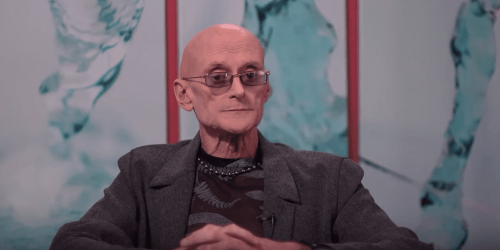Transpersonal Consciousness

Transpersonal psychology is the only school of psychology that studies the processes that transcend individual identity and the states of consciousness. Within this framework, people study transpersonal consciousness based on three broad developmental categories: the pre-egoic, the egoic, and the transpersonal or trans-egoic. The latter is considered to be the highest of human potential.
Transpersonal psychologist Ken Wilber developed this spectrum model of consciousness. He described it as a process of internal development that leads to transpersonal consciousness. In a nutshell, transpersonal consciousness is a state of mind that allows human beings to be connected and united to their surroundings.
Using Wilber’s work as a reference, many transpersonal psychologists study psychopathologies in relation to the patient’s level of transpersonal consciousness (pre-egoic or trans-egoic). Conventional psychiatry doesn’t take this into account when it comes to treating patients.
What is transpersonal consciousness?
This sub-field of psychology argues that our normal state of consciousness, the one we’re in when we’re awake, is just one type of human consciousness. Transpersonal psychology argues that there are more states of consciousness that are separate from one another in a very subtle way.
“It is as if our everyday awareness were but an insignificant island, surrounded by a vast ocean of unsuspected and uncharted consciousness, whose waves beat continuously upon the barrier reefs of our normal awareness, until, quite spontaneously, they may break through, flooding our island awareness with knowledge of a vast, largely unexplored, but intensely real domain of new-world consciousness.“
-Ken Wilber-

Wilber called this awareness and understanding “unity consciousness”. In fact, this concept has been around for centuries under different names. Some call it enlightenment, Nirvana, or Satori. In this state of mind, the subjects experience themselves beyond the rational (transpersonal identity) and feel that they’re one with the universe. They’re in a state of unity consciousness.
The model of transpersonal consciousness
Wilbur’s spectrum model of consciousness is a hierarchical model. Each of the three categories has its own levels:
- The pre-egoic level is characterized by somatic instincts and impulses. These are emotional and sexual impulses based on simple perception and feelings. Students of transpersonal consciousness also call this level “pre-personal” and it has three levels or stages:
- Sensory-physical.
- Fantasmatic-emotional.
- Representational mind.
- Egoic level. You reach the egoic level after having transcended the pre-egoic level, primarily through the level of internalization. Piaget called it “decreasing ego-centrism”. In other words, reaching a higher level of development means you have the ability to transcend your own point of view and find a higher one. This level, also called the personal level, has three sub-levels that are hierarchically organized:
- The mind role.
- The formal reflexive.
- The logical vision (or Centaur).
- Trans-egoic state. This state also develops over three stages.
- The psychic level: This is the culmination of the personal level of logical vision. It’s characterized by an increase in perception and the abilities of the ordinary mind.
- The subtle level: This is an intermediate level of spiritual development. It implies the development of a personal God, archetypes, and genuine mysticism.
- The causal level: Wilber describes this state as the universal, formless self. In Wilber’s own words: a unity consciousness without borders, everything permeates it. A being that is essentially one with the Supreme Self.

The psychiatric focus
In general, conventional psychiatry does not use any concepts from transpersonal psychology to treat patients with diverse psychopathologies. From the point of view of transpersonal psychology, pathologies manifested at the pre-personal level aren’t the same that manifest at the transpersonal level.
Transpersonal psychology emerged in the late 60s. However, it has ancient predecessors in Eastern philosophical traditions. It has been a part of postgraduate programs and countless research projects of some of the most prestigious universities in the world. In spite of all that, this interesting school of psychology is not well-known by many psychology professionals.
Transpersonal psychology is the only school of psychology that studies the processes that transcend individual identity and the states of consciousness. Within this framework, people study transpersonal consciousness based on three broad developmental categories: the pre-egoic, the egoic, and the transpersonal or trans-egoic. The latter is considered to be the highest of human potential.
Transpersonal psychologist Ken Wilber developed this spectrum model of consciousness. He described it as a process of internal development that leads to transpersonal consciousness. In a nutshell, transpersonal consciousness is a state of mind that allows human beings to be connected and united to their surroundings.
Using Wilber’s work as a reference, many transpersonal psychologists study psychopathologies in relation to the patient’s level of transpersonal consciousness (pre-egoic or trans-egoic). Conventional psychiatry doesn’t take this into account when it comes to treating patients.
What is transpersonal consciousness?
This sub-field of psychology argues that our normal state of consciousness, the one we’re in when we’re awake, is just one type of human consciousness. Transpersonal psychology argues that there are more states of consciousness that are separate from one another in a very subtle way.
“It is as if our everyday awareness were but an insignificant island, surrounded by a vast ocean of unsuspected and uncharted consciousness, whose waves beat continuously upon the barrier reefs of our normal awareness, until, quite spontaneously, they may break through, flooding our island awareness with knowledge of a vast, largely unexplored, but intensely real domain of new-world consciousness.“
-Ken Wilber-

Wilber called this awareness and understanding “unity consciousness”. In fact, this concept has been around for centuries under different names. Some call it enlightenment, Nirvana, or Satori. In this state of mind, the subjects experience themselves beyond the rational (transpersonal identity) and feel that they’re one with the universe. They’re in a state of unity consciousness.
The model of transpersonal consciousness
Wilbur’s spectrum model of consciousness is a hierarchical model. Each of the three categories has its own levels:
- The pre-egoic level is characterized by somatic instincts and impulses. These are emotional and sexual impulses based on simple perception and feelings. Students of transpersonal consciousness also call this level “pre-personal” and it has three levels or stages:
- Sensory-physical.
- Fantasmatic-emotional.
- Representational mind.
- Egoic level. You reach the egoic level after having transcended the pre-egoic level, primarily through the level of internalization. Piaget called it “decreasing ego-centrism”. In other words, reaching a higher level of development means you have the ability to transcend your own point of view and find a higher one. This level, also called the personal level, has three sub-levels that are hierarchically organized:
- The mind role.
- The formal reflexive.
- The logical vision (or Centaur).
- Trans-egoic state. This state also develops over three stages.
- The psychic level: This is the culmination of the personal level of logical vision. It’s characterized by an increase in perception and the abilities of the ordinary mind.
- The subtle level: This is an intermediate level of spiritual development. It implies the development of a personal God, archetypes, and genuine mysticism.
- The causal level: Wilber describes this state as the universal, formless self. In Wilber’s own words: a unity consciousness without borders, everything permeates it. A being that is essentially one with the Supreme Self.

The psychiatric focus
In general, conventional psychiatry does not use any concepts from transpersonal psychology to treat patients with diverse psychopathologies. From the point of view of transpersonal psychology, pathologies manifested at the pre-personal level aren’t the same that manifest at the transpersonal level.
Transpersonal psychology emerged in the late 60s. However, it has ancient predecessors in Eastern philosophical traditions. It has been a part of postgraduate programs and countless research projects of some of the most prestigious universities in the world. In spite of all that, this interesting school of psychology is not well-known by many psychology professionals.
This text is provided for informational purposes only and does not replace consultation with a professional. If in doubt, consult your specialist.







